How Are Arepas, Pupusas & Empanadas Different?
- September 2021
- By Emilly Olivares
- Recipe from Everywhere Latino
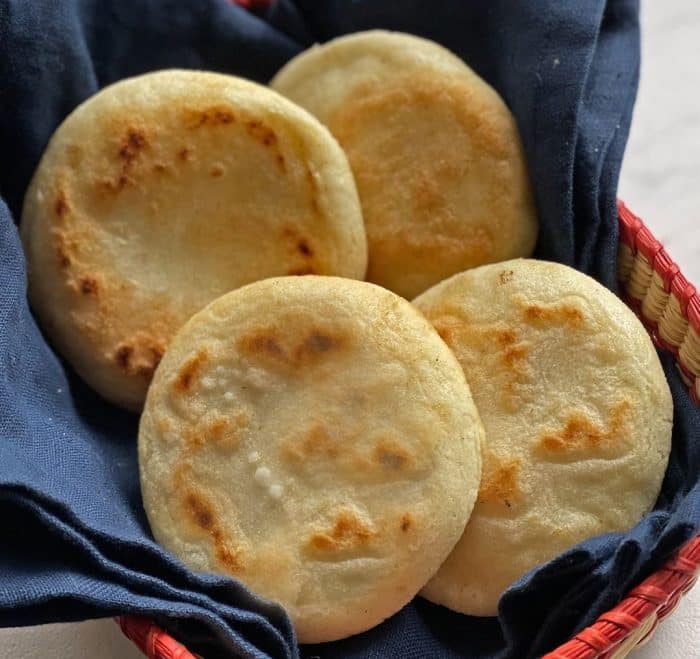
Arepas, pupusas and empanadas are the daily bread reached for every day by millions of Latinos. Not sure how they’re different? All three are something like their cousin, the tortilla, but thicker, crispier and often stuffed. A toasty stuffed arepa, a hot pupusa super rellenita, and a golden and crujiente empanada — mmm. Personally, I crave all three. I mean, can you blame me?
Neighboring Latin American countries that once shared a common land thousands of years ago still use similar, though not the exact same ingredients and measurements to prepare, cook and fill these filling treats made with harina de maíz o trigo — corn or wheat flour. If you want to go deeper into flour power, check out this Familia Kitchen guide to corn flour: Which type to use for which traditional Latino pan-like product and why? We did the research and it’s fascinating.
Starting in the 1500s, Spanish conquests and battles created borderlines, states, and countries, but Indigenous recipes native throughout Latin America remained in the hearts and minds of its locals. As they wandered the land and sea, their cooking traditions came with them, migrating and evolving to this day.
Each nation’s communities put their own twists on the foods we now call arepas, pupusas, tortillas and empanadas. Their resulting dishes are so similar, Colombia and Venezuela both claim arepas as their own, and Colombia and Argentina do the same with empanadas.
But no one even tries to compete with El Salvador for pupusas. Each year, the country celebrates National Pupusa Day the second Sunday of November in a major way. If you’re not cooking them, you’re definitely eating them that day, so yeah, it’s kind of a big national deal!
It makes sense, then, that arepas, pupusas and empanadas sometimes get confused for each other. Yes, they’re actually more alike than not — but their differences are muy significante.
If you love arepas, pupusas and empanadas as much as we do at Familia Kitchen, then you also believe that each pansito deserves its own special moment in the spotlight. Let’s get into the similarities and differences of our favorite masa snacks, below.
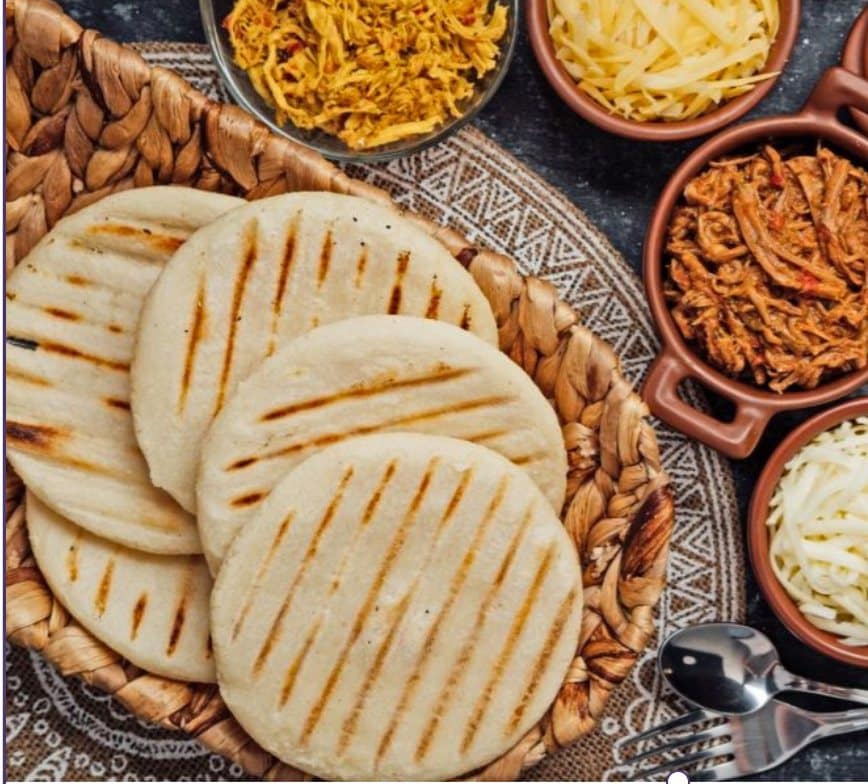
The Amazing Arepa: History and Popularity
Arepas are enjoyed daily for breakfast, lunch and/or dinner across Venezuela, Colombia and other northern South American countries that once belonged to the same territory during pre-Columbian times and were part of one large Spanish state called Gran Colombia, until it dissolved in 1831.
Three ingredients go into these delish patties: pre-cooked cornmeal, warm water and salt. The trio are slowly combined and kneaded until the mixture becomes a soft and moist dough. Some people allow the dough to sit for a few minutes while they prepare the relleno of their choice. When ready, you break off a medium-sized chunk of dough, roughly the size of your golf ball, and form it into a perfect ball. Gently pat and cup it between your palms for about 10 seconds, until it forms into a disc as thick as a finger.
The arepas are then briefly placed over a hot griddle (called a budare in Venezuela), until both sides turn golden brown. They are then often popped in the oven for a few last minutes so that the arepas continue to expand and crisp. If you want to stuff your arepas, slice a knife along one edge until a large-enough pocket is created. Its opening eagerly awaits a generous filling of savory meats, veggies, beans, cheese y más.
One of our favorite arepa fillings is reina pepiada — a classic with Venezolanos. This chicken and avocado mixture got its unique name in the 1950s after the first Venezuelan woman won the Miss World contest. Her name was Susana Dujim. Her father had promised a local Caracas arepa shop called Los Hermanos Álvarez that his daughter would visit. That much-awaited day, they handed the beauty queen a newly created arepa in her honor. It was stuffed with a creamy shredded chicken salad made with mayonnaise, cebollita picada, and avocado slices (is anyone else getting hungry?). The reina pepiada remains a best-seller across the country to this day.
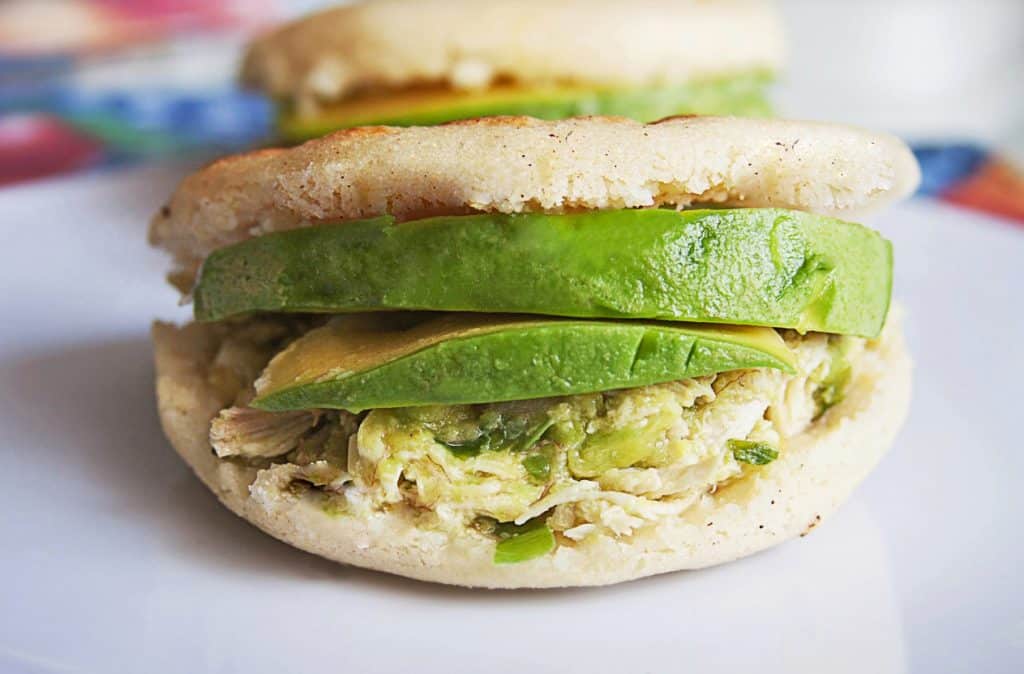
Other popular Venezuelan arepas with fun names include the arepa pelúa, which is stuffed with carne mechada (shredded beef). It’s said to resemble messy hair — hence its name: “pelúa” or hairy. The arepa domino is surely named after the way its beans and cheese filling resembles the black and white game pieces. It’s also delicious. And then there is the bright-yellow arepa perico, which means parrot, made with egg and tomato.
In Colombia, arepa recipes tend to use the puffy arepa as a base and the filling as a topping. Colombian arepas are usually sweeter and stuffed with cheese or simpler ingredients than their Venezuelan cousins.
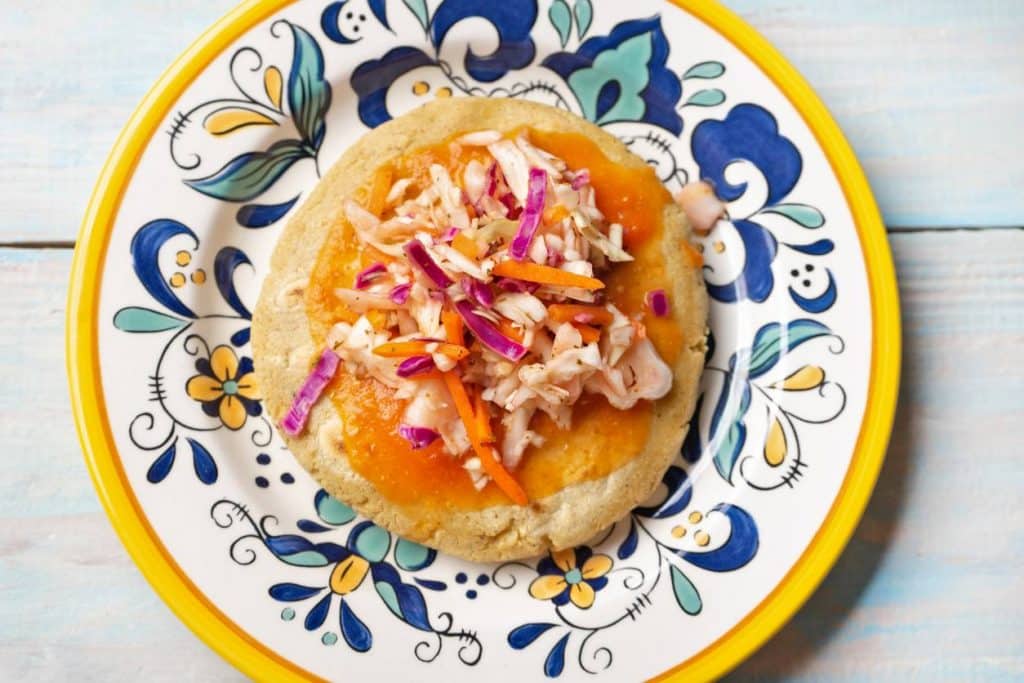
Pupusa, Por Favor: How They’re Different Than Arepas
It’s true, Google it. La pupusa is El Salvador’s national sandwich, celebrated annually on National Pupusa Day, the second Sunday of every November. And did you know that the world’s largest pupusa measured 14 feet 9 inches in diameter? It was made in Olocuilta, El Salvador in 2015 and holds the Guinness World Record.
Records indicate that the honor of inventing pupusas go 2,000 years back to a Pipil tribe who inhabited the Mesoamerican region we now know as El Salvador. As populations expanded, and people migrated, pupusas popped up in other territories, including nearby Honduras.
Pupusas are similar to arepas but the process differs after the bolita de masa is flattened. When making pupusas, the disc is thinner and is slightly cupped to create a small nest to hold the filling. The masa made from masa harina (like tortillas) is then pulled over the filling and sealed tightly on the other edge. It looks like a fluffier, thicker tortilla.
Like arepas, pupusas have many delicious rellenos. The most common are cheese, beans, chicharrón (pork rinds), shrimp, and loroco, a native vining flower to El Salvador, just to name a few. Once they are filled, both sides are cooked on a hot griddle or cast-iron pan brushed with vegetable or olive oil.
But wait, there’s more.
Let’s talk curtido and salsita. A good Salvadorean pupusa is just not complete without a final side or topping of un curtido delicioso — a slaw-like, slightly fermented mix of shredded cabbage, carrots, chopped onion, water, vinegar, and oregano. Think kimchi lite. A cruncy, juicy curtido is absolutely essential when taking the first bite of any pupusa. So is a spoonful or two of the nation’s beloved salsita de tomate: made with tomatoes, garlic, onion and a chile, either serrano or jalapeño.
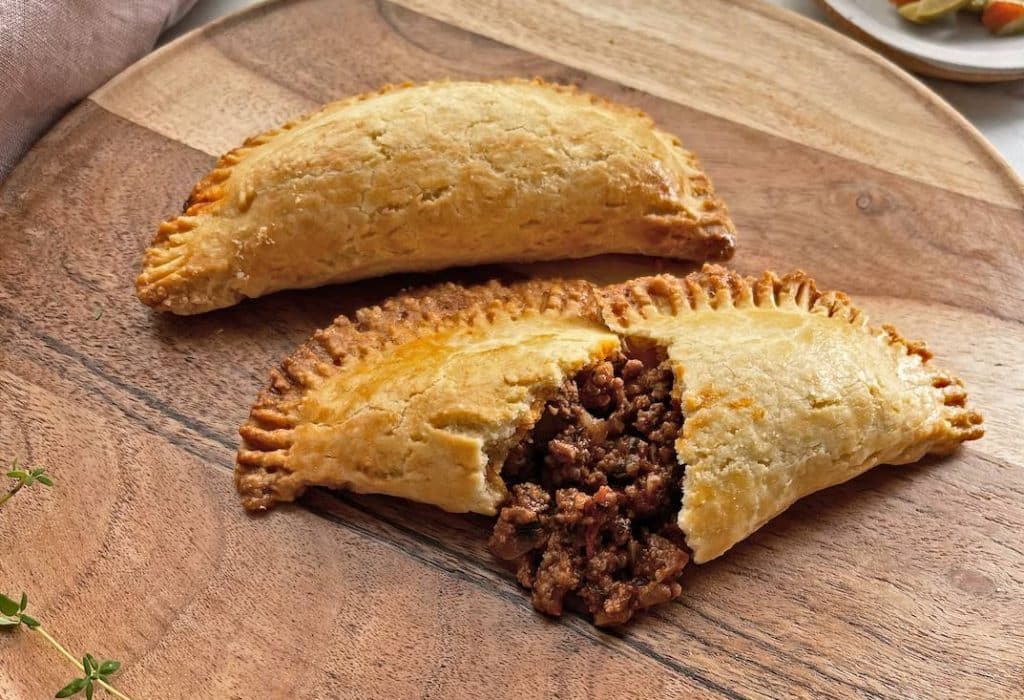
Empanadas, Everywhere: Introducing Wheat to the Treat
Empanadas are not only crunchy, filling and sabrosas, they are extremely versatile. Nations around the world have their own takes on this “enbreaded” creation. Countries and territories in south and west Asia, Europe, and Latin American destinations such as Argentina, Colombia, Puerto Rico, Chile, Uruguay, Panama, Brazil, y muchos más each have their own version of the empanada.
In Latin America, they are mostly called empanadas. In other parts of the planet they go by: pastelitos, pastelillo, samosas, panzerotti, sambousek, and of course meat pies, to name a few.
Though the exact origin of the empanada is unknown, the earliest recorded version of the empanada predates Jesus. That’s right: 1600 B.C. The empanada is then believed to have traveled to Latin America from Spain during exploration and colonization periods. Once the stuffed snacks arrived in Latin America, the empanada we know today with its distinct crescent shape became ubiquitous.
Empanadas around the world are typically made with wheat flour and stuffed with just about anything you can think of. Rellenos range from vegetarian to meat and chicken, seafood, various cheeses, and many, many more. Popular Latin American empanada stuffings include: ham and cheese, beef and papitas, and different guisados that often include (or don’t, depending on the region) olives, raisins, and peppers. They are usually accompanied with a fresh dipping sauce such as ají, a favorite Colombian salsa made with lime, tomato, cilantro, salt and pepper.
La preparación for empanadas closely resembles the process of making arepas and pupusas. The wheat flour is combined with water and kneaded until a nice and soft consistency is achieved. It is then covered and rests for about an hour while the filling is prepared.
When ready, the dough is flattened using a roller or baking pin. Circle cutouts are made using a soup bowl, pan lid or anything handy that makes a perfectly round shape. Your choice of filling is then placed on one side of the disc and covered with the other half of the dough. Here’s the pretty part: The edges are sealed using water or a beaten egg and reinforced by pressing the excess dough with your fingers. Or the tines of a fork, if you’re from Panama. Depending on the person making the empanada, the extra dough after it is sealed can be either cut off or folded back over again, creating a thick crust that resembles a twist or braid.
Empanadas are enjoyed as a snack, a meal, and even dessert! It’s all comes down to the dough — and by dough I mean you can make the shell or “bread” of the empanada sweet (like these guava and queso empanadas) or salty (like these beef, red pepper and olive empanadas) using just about anything that can be mashed and kneaded. Ingredients can expand beyond wheat to corn flour, corn meal, yuca, mashed plantain, potatoes, carrots, beets, y muchos ingredientes más.
Say I Dough to All 3
We might think of these three toasty treats as cousins, the beloved products of sister nations. In fact, many other countries beyond those in Latin America claim to be their originating homelands.
The truth is: They are all correct.
We were once all the same people eating the same thing: corn, in all of its configurations — including arepa, empanada, pupusa, plus, of course: tortilla — and many more. Then the Spaniards showed up with wheat and we started making things with wheat flour. Hola, empanadas. No matter the final shape or filling, the concept of flour plus water that is then cooked and stuffed or eaten plain all lead back to the earliest days of humans and transportable food. Lucky for us, our ancestors got it deliciously right.
Find Many More Recipes for Arepas, Pupusas and Empanadas at Familia Kitchen!
Photos: Michelle Ezratty Murphy (empanadas), CarlosRojas20 (pupusas), Nehopelon (arepas)
MoreLike This

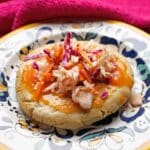
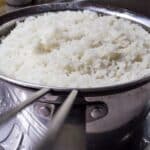
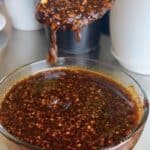
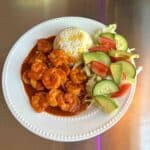
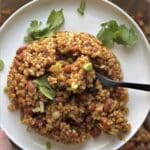
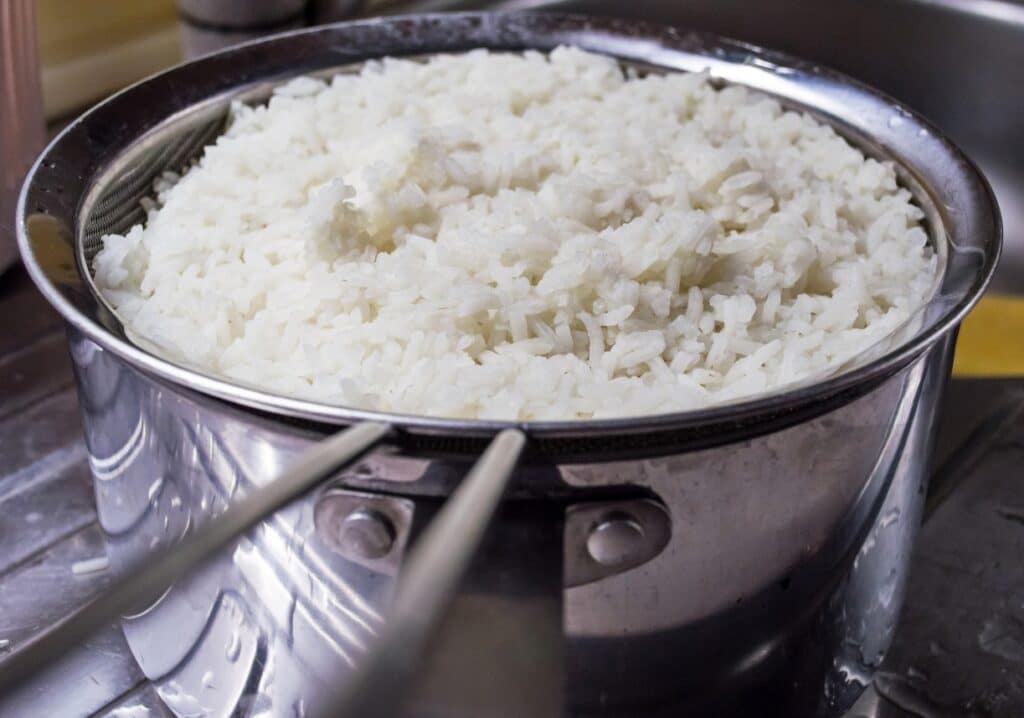


Got a question or suggestion?
Please rate this recipe and leave any tips, substitutions, or Qs you have!
Suggestions and questions from our readers
Those meat pies looks very nice